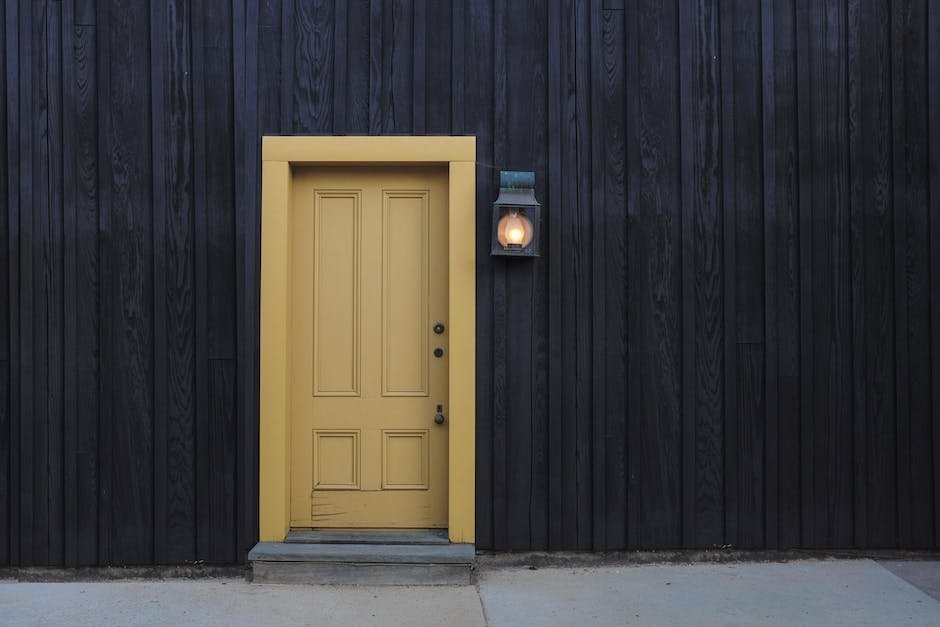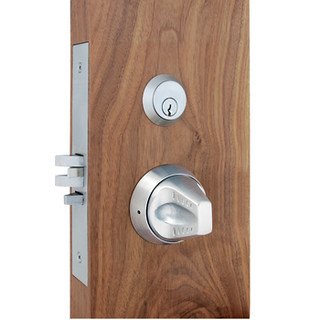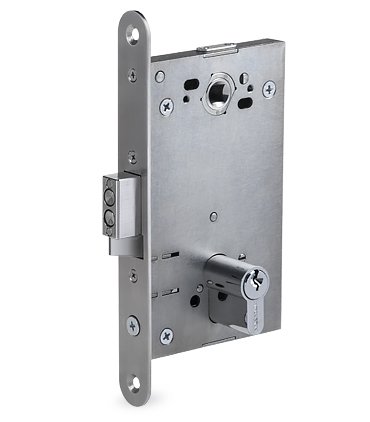Nestled within the intricate world of hardware marvels lies a hidden gem of security—the mortise lock. While often overlooked in favor of its more modern successors, this unassuming mechanism has been silently safeguarding our homes, offices, and cherished possessions for centuries. But just how does this ingenious contraption function behind its unyielding facade? Embark on a journey with us as we peel back the layers, revealing the intricate inner workings of a mortise lock through a step-by-step guide. From its humble origins to its steadfast presence in today’s security landscape, prepare to unlock the secrets of this fascinating device like never before. Lock the door behind you, and let’s venture into the captivating world of the mortise lock.
Table of Contents
- Introduction: The Basics of a Mortise Lock
- Understanding the Anatomy of a Mortise Lock
- Step-by-Step: How a Mortise Lock Functions
- Common Issues and Troubleshooting Tips for Mortise Locks
- Maintenance and Recommended Practices for Mortise Locks
- Q&A
- To Conclude

Introduction: The Basics of a Mortise Lock
Welcome to the fascinating world of mortise locks! If you’ve ever been curious about the inner workings of locks or wondered what sets mortise locks apart from their counterparts, you’ve come to the right place.
A mortise lock is a type of lock that is commonly used in residential and commercial buildings. Unlike a standard cylindrical lock where the locking mechanism is housed in a cylindrical casing, a mortise lock is installed within a pocket or “mortise” that is cut into the door.
One of the key advantages of a mortise lock lies in its robustness and security. The intricate design of a mortise lock ensures that it offers superior resistance against forced entry attempts, making it an excellent choice for securing valuable assets or providing peace of mind for your family and loved ones. Additionally, mortise locks often offer a wider range of functions and customization options, allowing you to personalize your security needs.
In the upcoming sections, we will delve deeper into the anatomy of a mortise lock, explore its various components, and discuss the key differences between mortise locks and other types of locks. So, fasten your seatbelts and get ready for an enlightening journey into the world of mortise locks!

Understanding the Anatomy of a Mortise Lock
A mortise lock is an essential component of any door, providing both security and functionality. To truly grasp the inner workings of this intricate mechanism, let’s dive into its fascinating anatomy.
1. Lock Body: This is the main part of the mortise lock, usually made from durable materials like brass or stainless steel. It houses other crucial components and provides stability to the entire lock system.
2. Cylinder: The cylinder is where the key is inserted to lock or unlock the mechanism. Typically, it consists of a plug with multiple pins, which align with the corresponding key ridges for smooth operation.
3. Mortise Box: Located within the door frame, the mortise box securely holds the lock body. It is crafted with precision to ensure a seamless fit, preventing any unwanted tampering or entry.
4. Latch Bolt: The latch bolt is responsible for keeping the door closed when not locked. It protrudes from the lock body and can be extended or retracted using the door handle or knob.
5. Strike Plate: Affixed to the door frame, the strike plate creates a secure point of contact for the latch bolt. This prevents unnecessary wear and tear, ensuring smooth and reliable operation over time.
6. Escutcheon Plate: This decorative plate surrounds the lock cylinder on the door’s surface. It is not only an aesthetic addition but also provides additional protection to the cylinder, making it harder to tamper with.
By understanding the fascinating anatomy of a mortise lock, you can appreciate the intricate design and functionality that goes into keeping your doors secure. From the lock body to the escutcheon plate, each component plays a vital role in safeguarding your home or office.

Step-by-Step: How a Mortise Lock Functions
Unlocking the Mystery of Mortise Locks
In the world of locks, few are as intriguing as the mortise lock. With its intricate design and effective security features, understanding how this lock functions is essential. Here’s a step-by-step breakdown to demystify this fascinating device:
- 1. Inserting the Key: Start by inserting the key into the keyway of the mortise lock. Make sure it slides smoothly and reaches the end of the channel.
- 2. Turning the Key: Apply gentle pressure and turn the key clockwise. As you do, the key’s ridges align with the corresponding pins inside the lock, allowing the lock cylinder to rotate freely.
- 3. Engaging the Lever: As the cylinder rotates, it activates a lever mechanism inside the lock body. This lever interacts with the lock strike plate, securing the door firmly in place.
- 4. Bolt Movement: With the lever engaged, the bolt, housed within the lock, retracts from the door frame, allowing the door to swing open.
- 5. Locking the Door: To lock the door, turn the key counterclockwise, causing the bolt to extend and secure the door in place.
This step-by-step guide provides a peek into the mesmerizing inner workings of a mortise lock. Its precision and reliability have made it a trusted choice for centuries, ensuring the safety and privacy of homes and businesses alike.
Common Issues and Troubleshooting Tips for Mortise Locks
As with any mechanical device, mortise locks can occasionally encounter problems that hinder their smooth operation. Understanding the common issues that may arise and having troubleshooting tips at hand can help you resolve these problems quickly and efficiently. Here are some tips to assist you in dealing with common mortise lock issues:
- Door Sticking: One common issue is when the lock fails to turn smoothly due to the door sticking. This can be caused by moisture, dirt, or misalignment. To troubleshoot this problem, clean the door frame and hinges, ensuring they are free from debris. Additionally, check if the lock is properly aligned and adjust if necessary.
- Key Not Turning: If your key is not turning smoothly, it could indicate a problem with the locking mechanism. Make sure the key is clean and free from corrosion. Lubricating the lock with graphite or silicone spray can also help. If the issue persists, it might be necessary to have a professional locksmith inspect the lock.
- Loose Handles or Spindles: Over time, handles and spindles on mortise locks can become loose, affecting their functionality. To fix this, tighten the screws holding the handles and spindles in place. If the handles or spindles are damaged or worn, they may need to be replaced.
Remember, always exercise caution when troubleshooting or attempting to repair a mortise lock. If you are unsure about any steps or if the issue persists, it is recommended to seek help from a professional locksmith to avoid causing further damage.
Maintenance and Recommended Practices for Mortise Locks
Mortise locks are a popular choice for both residential and commercial applications due to their durability and strength. To keep your mortise locks functioning optimally and extend their lifespan, it is important to perform regular maintenance and follow recommended practices. Here are some essential tips to ensure the longevity and reliability of your mortise locks:
- 1. Lubricate the lock: Apply a small amount of graphite or silicone-based lubricant to the keyway and moving parts of the mortise lock. This will prevent friction, reduce wear, and ensure smooth operation.
- 2. Clean the lock periodically: Use a soft, lint-free cloth and mild detergent to gently clean the lock, removing any dirt or debris. Avoid using harsh chemicals or abrasive materials that may damage the lock’s finish.
- 3. Check and tighten screws: Regularly inspect the lock’s components, including the strike plate, latch, and faceplate. Tighten any loose screws to maintain proper alignment and enhance security.
- 4. Test and adjust operation: Occasionally test the lock’s functionality by inserting and turning the key, as well as operating the thumb-turn lever. If you notice any stiffness or resistance, it may indicate a need for lubrication or adjustment.
By following these maintenance practices, you can ensure that your mortise locks continue to provide reliable security for years to come. Remember, a well-maintained lock not only enhances your peace of mind but also extends the lifespan of your investment.
Q&A
Q: What is a mortise lock and how does it work?
A: A mortise lock is a type of door lock that is installed within the door itself. It works by using a combination of a key, a cylinder, and a latch mechanism to secure the door, making it incredibly difficult to tamper with or force open.
Q: What are the main components of a mortise lock?
A: The main components of a mortise lock include the lock body, which houses the internal mechanism, the key, which is used to operate the lock, and the strike plate, which is affixed to the door jamb and receives the latch bolt.
Q: How does the key engage with the mortise lock?
A: When the key is inserted into the cylinder of a mortise lock, its unique pattern aligns with the pins and springs inside the lock body. This allows the key to turn, enabling the latch bolt to retract or extend, thus opening or securing the door.
Q: How does the latch mechanism of a mortise lock function?
A: The latch mechanism of a mortise lock consists of a spring-loaded latch bolt, which protrudes from the lock body when the door is closed. When the key is turned in the cylinder, it either retracts or extends the latch bolt, depending on whether you are locking or unlocking the door.
Q: What makes a mortise lock more secure than other types of locks?
A: The design of a mortise lock makes it robust and resistant to tampering. Its internal construction offers greater security compared to other locks, as the entire mechanism is installed inside the door, making it significantly harder for an intruder to bypass.
Q: Can a mortise lock be installed on any type of door?
A: While a mortise lock can be installed on various types of doors, it is more commonly used on exterior doors of commercial buildings and high-security residential properties due to its superior strength and durability.
Q: Is it necessary to hire a professional to install or repair a mortise lock?
A: It is highly recommended to hire a professional locksmith to install or repair a mortise lock. They have the knowledge, tools, and expertise needed to ensure proper installation and maintenance, maximizing the lock’s effectiveness and lifespan.
To Conclude
And there you have it, a step-by-step guide unraveling the mystery behind the intricate workings of a mortise lock. From its centuries-old origins to its modern-day variations, we have delved into the fascinating world of this ingenious invention. Hopefully, armed with this newfound knowledge, you will appreciate the craftsmanship and precision required to create such a reliable and secure locking mechanism. Whether you are a homeowner seeking to understand your door’s security or a curious individual looking to expand your mechanical knowledge, this guide should have satisfied your thirst for understanding. So, next time you turn that trusty key in your mortise lock, take a moment to marvel at the precision and complexity tucked away within your humble door.
As an affiliate, my content may feature links to products I personally use and recommend. By taking action, like subscribing or making a purchase, you’ll be supporting my work and fueling my taco cravings at the same time. Win-win, right?
Want to read more? Check out our Affiliate Disclosure page.